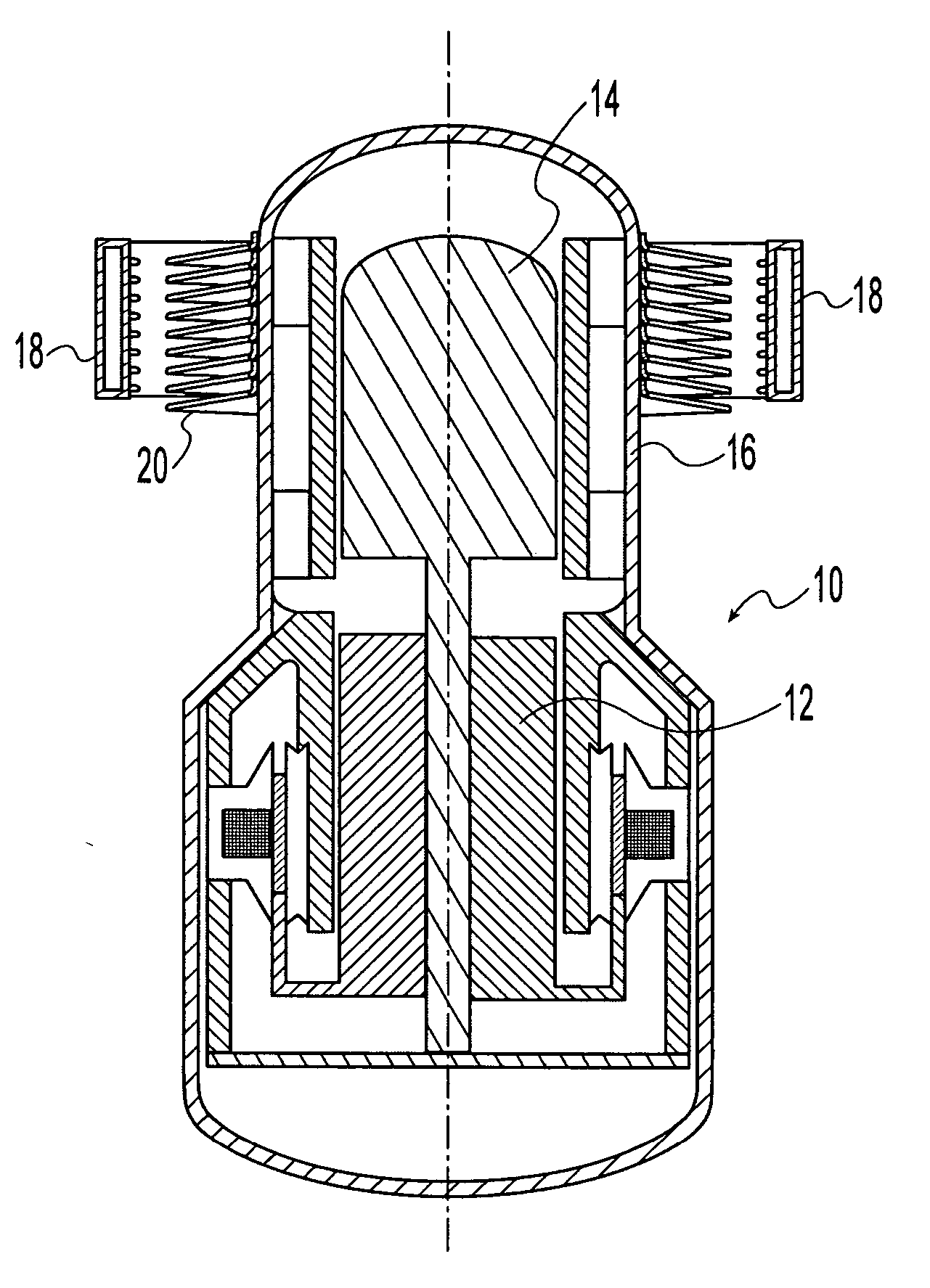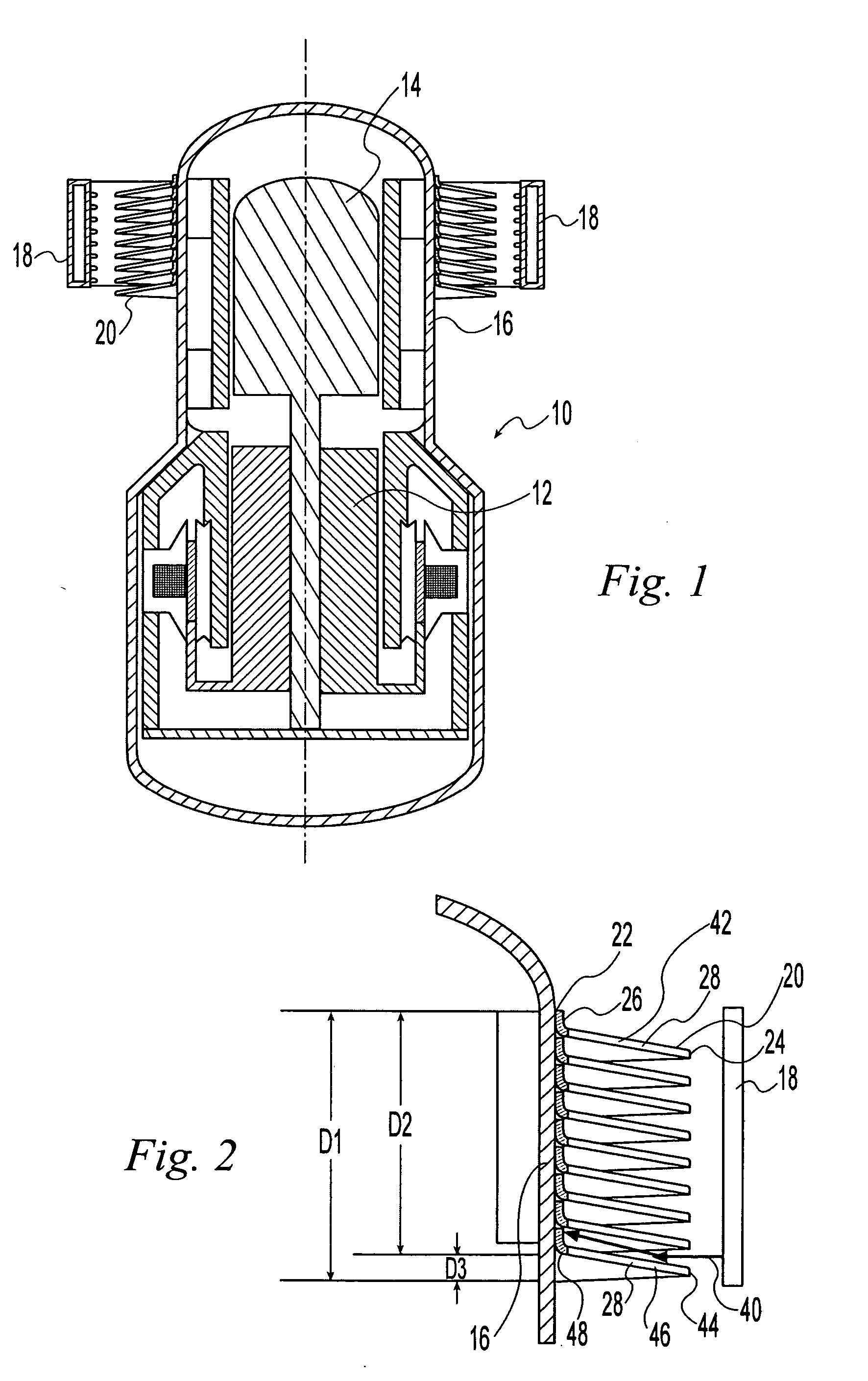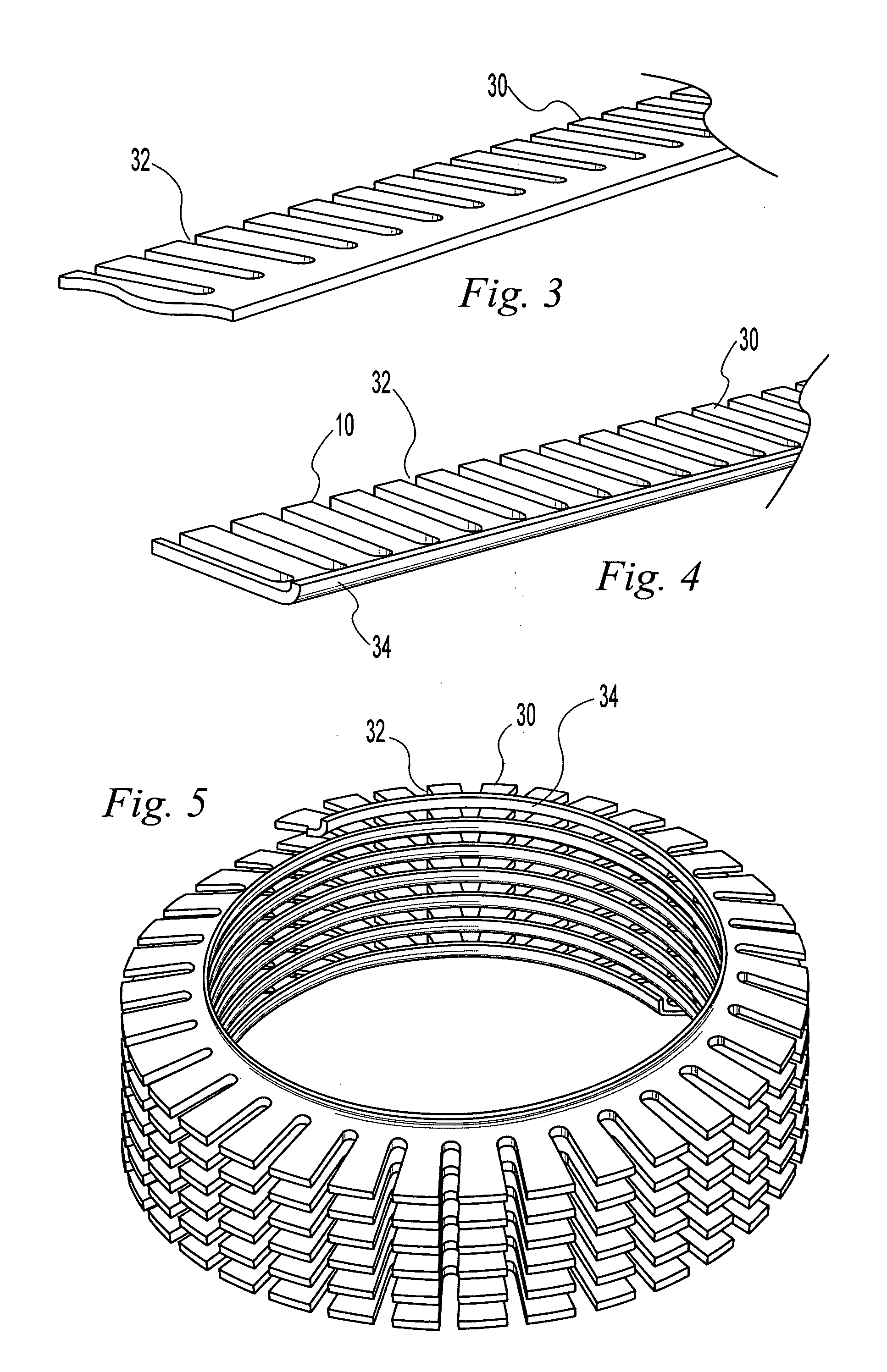Heat exchanger fins and method for fabricating fins particularly suitable for stirling engines
a technology of heat exchangers and fins, which is applied in the field of heat exchangers, can solve the problems of not being able to achieve the optimal transfer of heat from a surrounding gas burner into the head, and achieve the effect of facilitating bending into the helix
- Summary
- Abstract
- Description
- Claims
- Application Information
AI Technical Summary
Problems solved by technology
Method used
Image
Examples
Embodiment Construction
[0020]FIG. 1 illustrates a free piston Stirling engine 10 having a conventional power piston 12 and a displacer 14, which reciprocates in an engine head 16. The engine is powered by heat applied from a ring burner 18 surrounding the head 16. The heat is supplied by burner flames fueled by gas supplied into an interior chamber of the burner 18 from a fuel source and expelled through a matrix of orifices to each flame. The transfer of heat into the Stirling engine head 16 causes the alternate expansion and contraction of a working gas within the Stirling engine in accordance with well established principles of Stirling engine operation.
[0021] In order to improve the rate and efficiency of heat transfer into the head, it is known in the prior art to provide a heat exchanger on the exterior of the head 16. Thermally conductive, axially spaced fins surrounding and attached to the head of a Stirling engine have been used for such heat exchangers. Such fins are usually planar and extend r...
PUM
| Property | Measurement | Unit |
|---|---|---|
| thermally conductive | aaaaa | aaaaa |
| diameter | aaaaa | aaaaa |
| mass | aaaaa | aaaaa |
Abstract
Description
Claims
Application Information
 Login to View More
Login to View More - R&D
- Intellectual Property
- Life Sciences
- Materials
- Tech Scout
- Unparalleled Data Quality
- Higher Quality Content
- 60% Fewer Hallucinations
Browse by: Latest US Patents, China's latest patents, Technical Efficacy Thesaurus, Application Domain, Technology Topic, Popular Technical Reports.
© 2025 PatSnap. All rights reserved.Legal|Privacy policy|Modern Slavery Act Transparency Statement|Sitemap|About US| Contact US: help@patsnap.com



